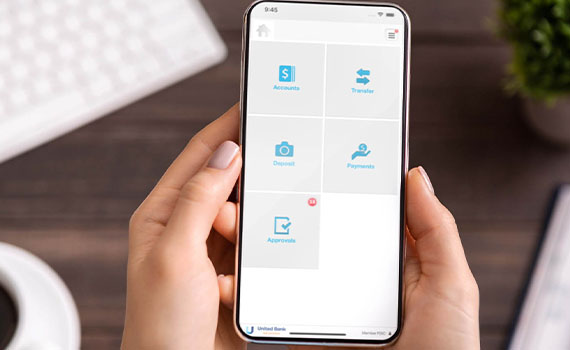Budgeting
A budget may sound restricting, but it’s really just a guide to help you be more intentional about where you’re spending your money and help you stay on track to reach your financial goals. You’ll be able to see how much money you have coming in, going out, and make adjustments to make sure you’re not spending more money than you’re making. By creating and sticking to a budget, you can reduce unnecessary spending and impulse buys and potentially save hundreds or thousands of dollars a year. Follow these simple steps to get started with your personal budget:
- Calculate your income- How much money you have coming in after taxes and paycheck deductions.
- Outline your expenses- How much you pay for housing, monthly bills, debt payments, groceries and personal expenses.
- Set savings goals- Where you want to be financially in 6 months, 1 year, 5 years. Set long and short-term savings goals.
- Monitor your budget- We recommend using our free budgeting tool within online banking or one of the many free budgeting websites or apps to continually monitor your budget.
Credit Scores
Your credit score is a number that comes from your overall credit report and is based on how well you pay your bills and how much you owe. The higher your score, the more likely you are to get a loan, as well as a better interest rate on that loan. A credit score of 700 or higher is generally considered good and it will take time and discipline to significantly improve your score. Follow these simple tips to start raising your score:
- Review your credit report- Make sure there are no errors. If anything looks suspicious, contact the credit reporting bureau that issued the report.
- Always pay your bills on time- Following your budget will ensure you have the funds to pay your bills on time.
- Pay down your credit card balances- Keep credit card debt low or pay it off monthly and don’t apply for multiple credit cards in short periods of time.
- When applying for a loan- Try to submit all loan applications within a two-week period. If within that timeframe, they would be treated as a single inquiry and have less effect on your credit score.
Paying Off Debt
If you have debt, you’re not alone. While the thought of paying off your debt can be intimidating, it might be easier than you think. Take it one step at a time and start with assessing your debts and creating a solid plan of which debts you want to tackle first. Here are a few strategies for you to consider:
- The Avalanche Method- Start paying off your accounts in order from the highest interest rate to the lowest.
- Pay the minimum balance on all your debts.
- Put as much extra money towards the debt with the highest interest rate.
- Once that debt is paid off, move to the account with the next highest interest rate, and keep going until all your debt is paid off.
- The Snowball Method- Start by paying off your debts in order from the smallest balance to the largest.
- Pay the minimum balance on all your debts.
- Put as much money extra as you can towards your debt with the smallest balance.
- Once you have paid off that debt, redirect those extra payments to the next smallest debt. Continue this process until you’re debt free.
- Debt Consolidation Method- Combine several higher-interest accounts into one with a lower rate.
- Take advantage of a low balance transfer rate to move debt off high-interest cards. Be aware that balance transfer fees are often 3–5 percent, but the savings from the lower interest rate may be greater than the transfer fee.
- If you have equity in your home, you may be able to use it to pay down card debt. A home equity line of credit may offer a lower rate than what your cards charge. Be aware that closing costs often apply, but an extra benefit is that home equity interest payments are often tax-deductible.
We're here to help
Wherever you are on your financial journey, our experts are here to help guide you along the way. You can call or chat with us anytime, day or night! So, don’t hesitate to give us a call at 616.559.7000 or stop by your local branch.




